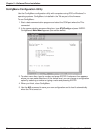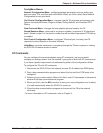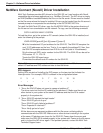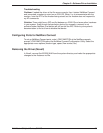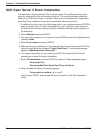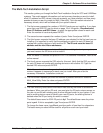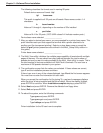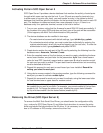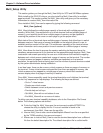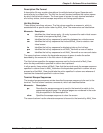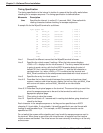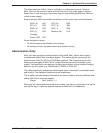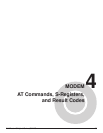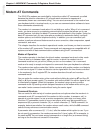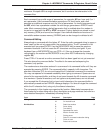
58 MultiModemISI Hybrid Series, ISIHI-2S
Chapter 3—Software/Driver Installation
Multi_Setup Utility
This section guides you through the Multi_View Utility for SCO and UNIXWare systems.
While installing the ISIHI-2S drivers, you also install the Multi_View utility for multiple
page terminals. This section profiles the Multi_View utility and gives you the necessary
information to create a Multi_View information file.
Once installed, Multi_View can be opened by typing the following command:
Multi_View [options]
Multi_View initializes the multiple page capacity of terminals with multiple pages of
memory. While Multi_View works even on a dumb terminal (without multiple pages of
memory), your terminal should have multiple pages of memory and be capable of
retaining the position of the cursor on each page to get the proper effect.
Most state-of-the-art terminals have multiple pages of memory that allow them to switch
between sessions. Each page of memory available on the terminal allows it’s user to
establish another session on the host. The multiscreen capability of the terminal stores
screen information and cursor position for each session to a different page of memory.
Multi_View allows the host to process the session-switching hot keys and issue the
necessary escape sequence to the terminal so the appropriate page displays. Multi_View
treats each new screen opened by the user as a virtual screen and maintains mapping
between each virtual screen created and a page of memory on the terminal. The number
of virtual screens and pages of memory available are dependent on the terminal
emulation, the particular terminal being used, and the number of pseudo devices created
by the system administrator during installation.
In an ideal case, there can be as many virtual screens as there are pages of memory on
the terminal. If more virtual screens are specified than there are pages of memory, two
virtual screens can be mapped to a single page of memory where both sessions’s
screens display when that page of memory is recalled.
Once Multi_View successfully reads the terminal description and initializes the terminal,
the hot key sequence for
help
displays. The following hot keys are defined:
• Go to n
th
virtual screen
• Create new virtual screen
• Switch between current and previous screens
• Provide help on hot keys
• Quit Multi_View with an exit status of zero
• End Multi_View with a non-zero exit status
To define your own terminal capability database, refer to the
Description File Format
below. The following options are defined:
-h Prints the Help file. Multi_View uses the environment variable MTDSPLY to
choose the utility to display this file. If no such variable is found in the
environment, then Multi_View uses the
pg
utility.
-t Informs Multi_View to use a terminal description different from the one specified
by the TERM variable in the user environment.
-f Allows user to instruct Multi_View to read the terminal description from a different
file than the default description file. The default description file is
usr/bin/msfile
.



